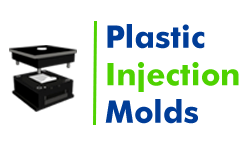- Mould Manufacturer
- Tooling
- Moulding Die
- Plastic Molding
- Plastic Injection Molding
- Injection Molding
- Nylon Injection Molding
- Injection Moulding
- Custom Injection Molding
- Injection Mould
- Injection Mouldings Process Manufacturers
- Medical Injection Molding
- Polycarbonate Injection Moulding
- Rapid Injection Moulding
- Injection Molds
- Injection Molding Cost
- Injection Molding Suppliers
- Injection Moldings
- HDPE Molding
- Metal Injection Molding
- Rubber Injection Molding
- Mold Designing
- Prototyping
- Automotive Injection Molding
- Blow Molding
- 3D Printing
6 Pro Tips For Buying the Appropriate injection moldings
Every industrial organization presently depends on injection moldings for one or more aspects of the production process. And why not? The technology has indeed been revolutionary. So the demand for injection molders has skyrocketed. You should know a few tips that help you purchase the appropriate one that will offer the greatest benefits to your business.
With the onset of 3D printing technology, it has become easier to analyze the pros and cons of molding injection for specific product manufacturing purposes. As you proceed to purchase, keep in mind a few factors that will help you to boost productivity.
1. Part design of injection mold
Don’t show the green flag by observing only part design of the mold. Later, you may discover that the injection molding process is not in harmony when the individual parts collaborate to do a single job. In fact, there can be features that you never want in the product. The injection mold will be successful only when the mold maker and the part designer can work on collaboration.
2. Proper risk management
Buying the injection molds can be complex, especially when you cannot afford to take the risks. If you don’t know for sure about the productivity of the mold, you can never decide the quantity of bulk volume production for which this was essential.
- It is impossible to take up some risk regarding the material quality that lacks strength.
- Durability is a major factor, and you should check the previous reviews to know more about the manufacturers.
3. Calculate cost-effectivity of injection molds
Buying a cheap injection molding device is like investing a considerable sum for business. But will it be the ideal step to march forward? To decide, you need to compare the amount you have to invest to avail the injection molds for sale.
- The price of the mold should be reasonable as expensive molds are not going to give you any special features. The only difference can be a mild difference in the quality of the outputs.
- The cost of production should not go up anyway as the chief aim is to maximize the profit, but with minimalistic investment.
- The production rate should be higher than the previous numbers.
- The prices for injection molding mold vary depending on the features and the manufacturers.
4. Standard mold features
The injection molding molds come with various features that the manufacturers decide. But you should always get a set of standard features as providing the specifications without knowing much about the molds can give rise to further complications.
Connection sizes, lift bars, and clamp slots are a few among the most important parts of the molds. You can always customize, but the small injection molding must exhibit the basic features.
5. The durability of injection molding molds
So what is the material that the manufacturer is using for the large injection molding? Regardless of the type of material, it should be durable to support the production of numerous end-user products. The affordable injection molding procedure is responsible for making some of the most durable prototypes as well as convincing the clients.
6. Strength
When you are buying the mold for developing things that need toughness and innate strength, you have to use high quality injection molding. The process ensures that the final product is as strong as you expected.
The designing and manufacturing of intricate objects have never been easier as technology brings in a new era of production. With the help of high precision injection molding, you can now manufacture even the most sophisticated devices and tools within a short time.
Benefits of using custom injection molding
The versatile method of custom injection molding is excellent for creating elaborate, complicated components with precise tolerances. It is a cost-effective option since it enables the production of identical components in high-volume runs. Additionally, compared to other plastic forming techniques like machining or 3D printing, the procedure is relatively quick and effective. Additionally, used injection molds gives designers versatility since parts may be made in a variety of sizes, colors, and forms to match any product design.
Depending on the required strength and flexibility of the completed product, a variety of materials, including nylon and polycarbonate, polypropylene, and ABS, may be utilized in bespoke injection molding. For companies that need to manufacture complicated items in either high or low volume, custom injection molding is the perfect production procedure.
Using Custom Plastic Injection Moulding Has Many Advantages
There isn't a definite industry consensus on what "custom" means in the context of plastic injection molding made to order. As a result, several injection molders that advertise their ability to provide unique services are unable to design or create components with exacting requirements and close tolerances. It's critical to assess how an injection molder fits with the requirements of your project. With increasing application complexity, a real custom injection molding partner's engineering, design, and technical expertise increases.
While shorter time to market is undoubtedly taken into account while working on bespoke plastic molding projects, component design, material choice, tool design, and quality control used injection molds are not sacrificed in the process. A thermoplastic polymer is heated over its melting point in the process of injection molding, turning the solid material into a molten fluid with a relatively low viscosity.
Dependable partner for custom plastic injection molding
Genuine custom injection molders consider these crucial phases of product development while deciding on the best procedures. We plastic injection molds are a trusted bespoke plastic custom injection molding companies with a track record of accomplishments in a variety of sectors. On component design and development, used injection molds we collaborated closely with the customer's engineering team, bringing moldflow analysis to pinpoint and resolve compatibility and molding and material difficulties.
However, only a molder skilled in specialized bespoke plastic injection molding techniques and technologies can provide value-added collaboration, time and money savings, and reliable, successful outcomes. Depending on how complicated the item is and how big it is, bespoke injection molding may produce complex parts in a matter of hours or days. Because of this, it is perfect for rapid turnaround times and prototyping before starting large-scale manufacturing.
FAQ
- Q1. What Are The 4 Stages Of Injection Molding?
Four stages are: Clamping, Injection, Cooling, Ejection. This process lasts from 2 sec. to 2 min.
- Q2. What Is The Injection Molding Process?
In the injection molding process, molten material—typically plastic—is injected into a mold cavity. The mold is opened and the completed product is discharged once the substance cools and solidifies. This process is frequently employed in the industrial industries to produce complicated and precisely engineered plastic parts in large quantities.
- Q3. What Are The 5 Elements Of Injection Molding?
The five key elements of injection molding are:
- Material: The raw material, typically in pellet form, used to create the molded parts.
- Mold: The tooling or mold cavity where the molten material is injected and shaped into the desired form.
- Injection Unit: The machinery that melts and injects the material into the mold.
- Clamping Unit: The equipment that holds the mold halves together during the injection process.
- Cooling System: The mechanism for cooling and solidifying the material within the mold before ejecting the finished part.
- Q4. What Are The Parts Of Injection?
An injection molding machine has 3 main parts:
- Clamping unit: Hold the mold shut.
- Injection unit: Melts and squirts plastic into the mold.
- Mold: Gives the plastic its final shape.
Other parts include a hydraulic system for power, a cooling system for solidification, and a control system to manage everything.







.webp)

